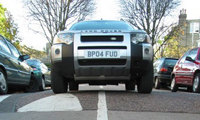The road ‘improvement’ that gives motorists the hump
 An overwhelming majority of motorists want to see the much-hated speed hump removed from British roads.
An overwhelming majority of motorists want to see the much-hated speed hump removed from British roads.According to research by online car-buying guide, newcarnet.co.uk, a massive 87 percent of drivers said they would gladly see all versions of the ‘sleeping policeman’ put to sleep permanently in order to avoid an average annual bill of £235.71, possible injury and even structural damage to their houses!
Speed humps were introduced in 1991 as a measure for controlling vehicle speeds, and the Government claims that for every 1mph decrease in speed, the chance of an accident reduces by 5 percent.
But recent studies found that speed humps have caused injury to drivers, especially those with bone conditions such as osteoperosis, increased road noise and pollution levels and mechanical damage to vehicles.
Data from independent automotive warranty specialist, Warranty Direct, shows that over the last 10 years, an average of 1 in 8 cars has suffered suspension damage that could be directly attributed to speed humps, described by some as ‘inverted potholes’. The highest average cost of repairs topped £319 in 2005.
Guidelines on the construction of speed humps say it is illegal for them to be raised more than 100mm from the road surface, although the Department for Transport states that, to avoid grounding, they should not actually exceed 75mm.
The regulations also state that humps can not be sited within 25m of bridges, subways or tunnels because the impact of vehicles traversing them sends a shock wave through the ground. Depending on the weight of traffic and the proximity of buildings, that could cause structural damage.
Massimo Pini, of newcarnet.co.uk, said: “Discrepancies exist not only in the rules for constructing speed humps, but also councils’ reasoning for installing them. In Barnet, for instance, the local council removed all speed humps in 2005, and recorded a 14.9% drop in accidents in the first six months. Usually, councils install speed humps on the grounds of improving safety!”
The humps also cause a dangerous distraction to drivers, slow the progress of emergency vehicles, and often divert heavy traffic on to less suitable roads, as motorists seek to avoid the discomfort of driving over them.
A petition signed by 6,622 motorists, calling for the scrapping of all speed humps, was delivered to the Government in July.

